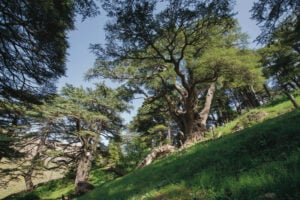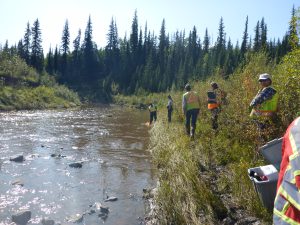
Environment
Kelp: The sustainable superfood coming soon to a plate near you
Kelp’s potential as a commercial crop is finally being recognized — and, as kelp forests vanish worldwide, so is its importance in coastal ecosystems
- 2515 words
- 11 minutes
This article is over 5 years old and may contain outdated information.
Environment

The kelp forests rippling beneath the ocean surface off the coast of Nova Scotia were once among the world’s most productive ecosystems. But over the past three decades warming waters have decimated this crucial underwater habitat, threatening the many species that depend on it.
Once-luxurious kelp beds have shrunk by 85 to 99 per cent along more than 100 kilometres of Nova Scotia coastline over approximately the last half century, says Karen Filbee-Dexter, a researcher at Dalhousie University. These coral-reefs-of-the-North been replaced by sprawling mats of turf-forming and invasive algae.
Kelp needs cold water to flourish and is particularly susceptible to temperature change. Unfortunately for the kelp, the Atlantic coast of Nova Scotia is one of 24 globally-identified ocean warming hotspots; for the past 35 years the sea water’s been warming .06 degrees celsius each summer. The worst kelp losses have been recorded in protected areas like St. Margaret’s Bay and Mahone Bay.
“A healthy kelp bed is one of the most beautiful things in the world. And when something like this is happening in your backyard, it’s sad,” says Filbee-Dexter, who grew up in St. Margaret’s Bay. “Especially when a lot of people never even bother to look below the water’s surface.”
Although Filbee-Dexter concedes that local anthropogenic stressors (e.g. overfishing, pollution and species introduction) could be playing a small part in the decline, she notes in the study (published this year in the Marine Ecology Progress Series) that unlike other more populated coastlines, Nova Scotia is largely undeveloped and that the culprit is most likely warming waters.

Are you passionate about Canadian geography?
You can support Canadian Geographic in 3 ways:

Environment
Kelp’s potential as a commercial crop is finally being recognized — and, as kelp forests vanish worldwide, so is its importance in coastal ecosystems

Environment
An in-depth look at how trees work to keep us alive and the value of old-growth forests

Environment
Many of Canada’s 25 watersheds are under threat from pollution, habitat degradation, water overuse and invasive species

Environment
David Boyd, a Canadian environmental lawyer and UN Special Rapporteur on Human Rights and the Environment, reveals how recognizing the human right to a healthy environment can spur positive action for the planet